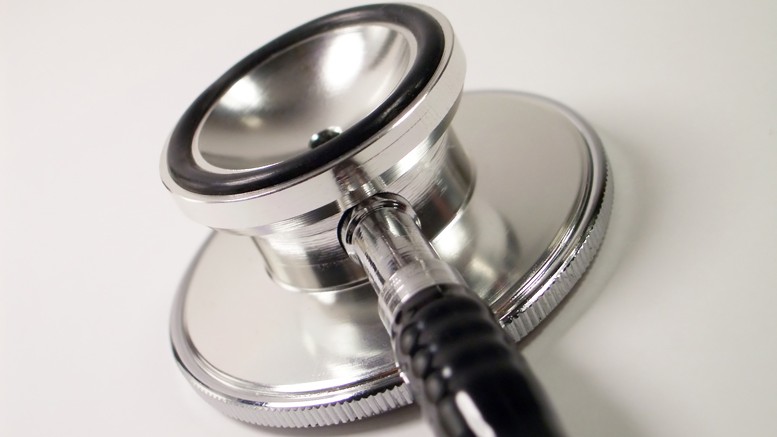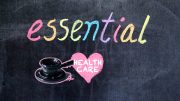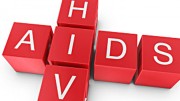Plus, PrEP for trans women considering it
By: Eric Brus*
President Barack Obama presented his administration’s budget request for Fiscal Year 2017 (FY17) to the U.S. Congress earlier this month. With few exceptions, the proposed budget would provide the same level of federal support for most domestic HIV/AIDS-related programs as in FY16. In particular, the FY17 budget would continue funding programs that provide treatment and care completion services, including a total allocation of $2.33 billion for the Ryan White HIV/AIDS Program (Ryan White), of which $900 million would support the AIDS Drug Assistance Program. Funding for the Department of Housing and Urban Development’s Housing Opportunities for Persons with AIDS (HOPWA) would be maintained at the FY16 level of $335 million. But the budget also includes new funding for a pilot program to provide pre-exposure prophylaxis (PrEP) to people who are vulnerable to HIV, including gay and bisexual men.
A White House fact sheet summarizing HIV/AIDS allocations in the President’s FY17 budget proposal highlights the following items:
- PrEP Pilot Program: The FY17 budget proposal includes $20 million for “a new innovative pilot program to increase access to PrEP and allow grantees, as the payer of last resort, to use a portion of funds to purchase the medication and other related healthcare services.” This new funding is in keeping with a key element of the updated National HIV/AIDS Strategy, launched last summer, which calls for providing more people with highly effective prevention services such as PrEP to reduce new HIV infections.
- Increased Funding for Veterans Living with HIV: The budget includes $1.13 billion within the Department of Veterans Affairs (VA), including a $57 million increase for medical care, “to ensure that veterans living with HIV/AIDS receive high quality, comprehensive clinical care, including diagnosis of their infection and timely linkage to medical care.”
- SPNS Hepatitis C Project: The proposed Ryan White budget includes $9 million in new funding to support a Special Projects of National Significance (SPNS) initiative to increase hepatitis C screening and expand access to hepatitis C care and treatment among people living with HIV.
Resource for Transgender Women Considering PrEP
Studies indicate that more than one-quarter of transgender women in the U.S. are living with HIV. Project Inform and Outshine NW have partnered to create a free resource, PrEP: Transcending Barriers for Safer Pleasure, specifically written for trans women. The 24-page booklet describes pre-exposure prophylaxis (PrEP) in plain language and discusses the following concerns from the perspective of trans women:
- How to gauge if PrEP might be right for you;
- Questions to ask your provider if you’re thinking about starting PrEP;
- How people start and stop taking PrEP;
- Guidance on using condoms with PrEP;
- Possible side effects of Truvada – the medication used for PrEP;
- What is known about interactions between PrEP and feminizing hormones;
- Disclosure: Considering whether to tell friends, lovers, and others that you’re taking PrEP.
“Transgender women are fighting a serious crisis right now with regard to HIV and inadequate healthcare resources,” notes Brandyn Gallagher, executive director of Outshine NW. “Sexual health researchers, educators, and providers must actively engage transgender people and develop culturally appropriate HIV prevention strategies if we want to see an end to the virus.” A Spanish-language version of the booklet is expected to be available soon.
New CDC Reports Examine HIV Disparities Among Blacks/African Americans
The February 5 and 12 issues of CDC’s Morbidity and Mortality Weekly Report (MMWR) included several articles and research reports focusing on the disproportionate impacts of HIV/AIDS among Blacks/African Americans (Blacks) in the U.S. In a brief overview, National Black HIV/AIDS Awareness Day – February 7, 2016, CDC notes that Blacks accounted for 44% of new HIV diagnoses in the U.S. during 2014, and that nearly three-quarters (73%) of these new diagnoses were among men. The annual HIV diagnosis rate for Black women (30.0 per 100,000) was 18 times the rate for White women (1.7 per 100,000) and five times the rate for Hispanic/Latino women (6.5 per 100,000).
Disparities in Consistent Retention in HIV Care — 11 States and the District of Columbia, 2011–2013: Blacks are significantly less likely to be consistently retained in HIV Care, according to this new report. CDC researchers used National HIV Surveillance System (NHSS) data to track retention in HIV care during the 3-year period from 2011 through 2013 in 12 jurisdictions (11 states and the District of Columbia). Among the 9,824 adults and adolescents with HIV infection diagnosed in 2010 who were still alive in December 2013, 43% were retained in HIV care for all 3 years. Nineteen percent were retained in 2 of the 3 years; 14% were retained in 1 of the 3 years, and 25% were not retained in any of the 3 years.
However, the researchers found substantial racial/ethnic disparities in retention-in-care rates. Only 38% of Blacks with HIV infection were consistently retained in care during 2011 through 2013, compared with 50% of Hispanics/Latinos and 49% of non-Hispanic Whites. Likewise, a larger proportion of Blacks (28%) were not retained in care during any of the 3 years, compared with Hispanics (23%) and Whites (19%).
“These findings are consistent with previous reports on racial/ethnic differences in HIV care engagement and demonstrate that these disparities remain over multiple years,” the researchers note. “The racial/ethnic differences in HIV care retention are established during the first year after diagnosis, underscoring the importance of early engagement in care to reduce disparities in sustained retention in care and thus improve the resulting outcomes (e.g., initiation of treatment and viral suppression).” Further, “Barriers to retention in care, such as lack of health insurance, limited access to health services, and stigma, are particularly prevalent among Blacks. Continuing to identify barriers to HIV care engagement, including those leading to prolonged lack of retention in care, can inform development of effective interventions to improve HIV care engagement among Blacks. Developing such interventions might narrow racial/ethnic disparities in clinical outcomes.”
HIV-Related Risk Behaviors Among Male High School Students Who Had Sexual Contact with Males – 17 Large Urban School Districts, United States, 2009-2013: This report examines the prevalence of HIV risk behaviors among male students who have reported sexual contact with other males, with breakdowns by race/ethnicity. The CDC authors note that, “Although risk behaviors are necessary for HIV transmission, the findings in this report do not provide evidence that differences in HIV-related risk behaviors alone are driving the higher numbers of HIV diagnoses among young Black MSM compared with young Hispanic and White MSM. Indeed, Black male students who had sexual contact with males in this report often had a lower prevalence of HIV-related risk behaviors.”
In particular, compared to their White counterparts, Black MSM students had a significantly lower prevalence of the following risk behaviors: drinking five or more drinks of alcohol in a row; ever using inhalants, heroin, ecstasy, or using prescription drugs without a doctor’s prescription; and drinking alcohol or using drugs before their last sexual intercourse. However, a significantly higher proportion of Black MSM students reported ever having sexual intercourse than either White or Hispanic MSM students.
“Other explanations besides differences in HIV-related risk behaviors might help explain differences in HIV diagnoses by race/ethnicity among MSM,” according to the CDC researchers. “Key among these are higher prevalence of HIV, undiagnosed HIV infection, and other sexually transmitted infections among Black MSM compared with MSM of other races/ethnicities. Because Black MSM are more likely to have sex partners of the same race, Black MSM are at greater risk for HIV infection within their sexual networks. In addition, Black MSM who are infected with HIV are less likely to have health insurance, adhere to antiretroviral treatment, and have suppressed HIV viral load. These risks are compounded by social determinants of health associated with increased risk and poorer health outcomes that include higher rates of unemployment and incarceration and lower incomes and educational attainment.”
Modeling Study: Achieving Key Targets in Updated NHAS Could Save 128,000 Lives
Achieving three key targets in the updated National HIV/AIDS Strategy (NHAS) could result in a 58% reduction in new HIV infections in the U.S. at an additional cost to the nation’s health system of about $105 billion, according to a recent modeling study by researchers from Johns Hopkins and Emory University. For their analysis, the research team used the Johns Hopkins HIV Economic-Epidemic Model to project the impacts of three targets specified in updated NHAS: 1) 90% of persons infected knowing their HIV status; 2) 85% linkage to care within one month after diagnosis; and 90% retention in care for persons diagnosed.
They calculated that, if current rates of engagement along the HIV care continuum remained constant, then there would be approximately 524,000 new HIV infections and 375,000 deaths between 2016 and 2025. However, the achievement of the key NHAS targets above could substantially reduce both new infections and deaths. The model indicates that the greatest impact would be achieved by reaching the target of rapid linkage to care – which would avert 52% of new infections, compared to the base case of current rates of engagement. Increasing awareness of HIV status and improving retention in care to the NHAS target levels would yield much smaller benefits – 2% and 4% reductions in new infections, respectively.
The combined impact of attaining all three targets could reduce new U.S. HIV infections by 58% and save 128,000 lives, compared to the base case, at an incremental cost of about $105 billion, the researchers calculate. Most of this added expenditure would be for the costs of additional antiretroviral treatment (ART) at an average of about $32,000 per person per year. “The primary gap in the current continuum of care is in care retention, which is needed to realise the prevention and health benefits of use of ART and viral suppression; achieving the NHAS goal of engaging 90% of those diagnosed in care could halve the number of HIV infections over the next 10 years,” the researchers note. “These results offer credence to the importance of achieving the NHAS progress indicators to bend the curve of the HIV epidemic.”
Further, “if we are to succeed in curbing transmission, we must also reframe our approach to funding the HIV response, seeking innovative and targeted funding mechanisms to facilitate this long-term treatment and retention. Reducing ART costs through such mechanisms as 430B pricing, AIDS Drug Assistance Programs, and generic manufacturing of key drugs could offer substantial health system cost savings. Efforts to both expand funding for HIV care, including ancillary services and interventions to promote long-term retention, and lower the costs of ART must both be prioritized.”
FEATURED HEALTH RESOURCES
National Women and Girls HIV/AIDS Awareness Day (March 10) and National Native HIV/AIDS Awareness Day (March 20)
National Women and Girls HIV/AIDS Awareness Day
Thursday, March 10, will mark the 11th observance of National Women and Girls HIV/AIDS Awareness Day (NWGHAAD). The overriding purpose of the NWGHAAD is to raise awareness of the impact of HIV/AIDS on women and girls. In commemoration of this day, we have compiled an annotated list of online resources focusing on HIV/AIDS among women and girls in the U.S.
Fact Sheets and Reports on Women and HIV
HIV Among Women. This 2015 CDC fact sheet presents information about trends in new HIV infections and HIV/AIDS diagnoses and deaths among women in the U.S. It also discusses the various factors that can place women at risk for HIV infection and the steps CDC is taking to address the needs of women affected by HIV/AIDS.
Women and HIV/AIDS in the United States. This four-page fact sheet from the Kaiser Family Foundation provides excellent summary information on the impact of HIV/AIDS on U.S. women. The fact sheet, which was last updated in 2014, includes: a snapshot of the epidemic, a review of key trends and current cases, information on reproductive health and HIV transmission specific to women, HIV testing, access to prevention and care, and women’s opinions about HIV/AIDS.
Women and HIV/AIDS. This is a global overview of HIV/AIDS among women from Avert.org. Topics covered include: updates on HIV/AIDS among women in different geographical regions; the factors that place some women at high risk for becoming infected with HIV and reduce access to care and services; HIV counseling, testing, and antiretroviral treatment among women; prevention programs specifically for women; and efforts to reduce MTCT of HIV. This document also includes citations and hyperlinks to 50 source research papers and reports.
National Native HIV/AIDS Awareness Day
The National Native HIV/AIDS Awareness Day (NNHAAD) will be observed this year on Sunday, March 20. NNHAAD is a collaborative effort between the National Native American AIDS Prevention Center, CDC, and other organizations. It is designed to promote HIV testing in Native communities through educational materials and use of marketing strategies. The goals and objectives of NNHAAD are to:
- encourage Native people to get educated and to learn more about HIV/AIDS and its impact in their community;
- work together to encourage testing options and HIV counseling in Native communities; and
- help decrease the stigma associated with HIV/AIDS.
To support activities commemorating NNHAAD, we have compiled an annotated list of online resources focusing on HIV/AIDS among American Indians and Alaska Natives.
National Native HIV/AIDS Awareness Day Website: This is the official website for NNHAAD. The site provides background information about the day, together with links to fact sheets, event listings, and posters and other promotional materials.
HIV/AIDS and American Indians/Alaska Natives. This is a web page from the Office of Minority Health with detailed statistical information about HIV testing, HIV and AIDS cases, modes of HIV transmission, and death rates among American Indians and Alaska Natives.
HIV/AIDS Among American Indians and Alaska Natives. This is a CDC fact sheet.
Native Gay Men and Two Spirit People: HIV/AIDS and Viral Hepatitis Programs and Services. Issue brief from the National Alliance of State and Territorial AIDS Directors.
Links: Native Americans. This is a web page of the HIV InSite with links to organizations and resources concerned with HIV/AIDS in the Native American community.
*Eric Brus is the Director of Health Information at AIDS Action Committee. This report is produced by the Health Library of the AIDS Action Committee in collaboration with the New England AIDS Education and Training Center Minority AIDS Initiative Project. The full version is available online.







